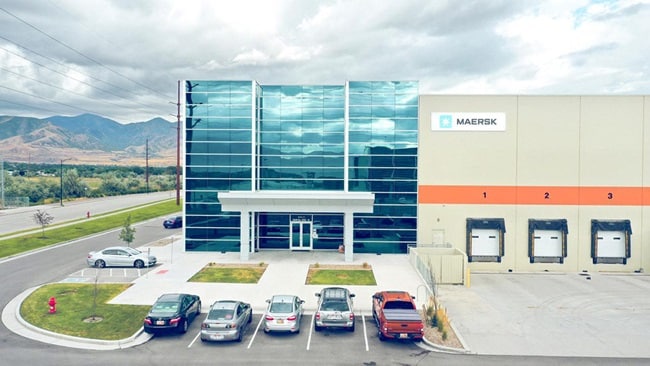Your cargo arrives by ship, rail, or truck at a transfer hub, where it is swiftly transferred to another mode of transport to continue its journey. This smooth handover is called transloading – a smart logistics strategy that reduces dwell time at terminals, makes better use of truck space, and keeps shipments flexible for the final delivery leg.
But how exactly does transloading work? And could it be right for your business? Let’s dive in with practical insights, plus a downloadable decision checklist to help you decide.
What is transloading in logistics?
Transloading involves moving freight from one mode of transportation to another (e.g., from ocean containers to trucks or railcars) during its journey. The transfer happens at facilities strategically located near key ports or intermodal hubs.
It’s especially useful when different modes of transport are required to complete a single shipment, such as from ocean shipping to road or rail transport. It supports both Full-Container Load (FCL) and Less-than-Container Load (LCL) shipments, offering versatile options for various goods.
What products and goods are suitable for transloading?
Transloading is suited to handle almost all types of cargo, including:
- Consumer packaged goods (e.g., electronics, apparel)
- Automotive components (e.g., parts, engines, assemblies)
- Construction materials
- Raw Materials (used for manufacturing)
Transloading vs other logistics methods
To better understand the role of transloading in logistics, let’s see how it differs from other common shipping and handling methods:
| Method | Description | Best for |
|---|---|---|
|
Method
|
Description
Transfer of containers directly between ships at ports; primarily ocean-focused and mainly handles FCL shipments.
|
Best for
International shipping routes, minimal inland logistics.
|
|
Method
|
Description
Rapidly transfers goods between trucks at warehouses without storage; shipments often split into multiple destinations.
|
Best for
Domestic, fast-moving retail goods.
|
|
Method
|
Description
Goods remain in the same container throughout, only changing transport modes, primarily for FCL.
|
Best for
Shipments needing minimal handling or repacking.
|
How does transloading work?
Transloading typically involves three main steps:
Inbound cargo arrival:
Goods arrive at a transloading facility by various modes – such as ocean, rail, or truck –depending on the origin. Ocean containers are often trucked from the port to the facility, while rail or domestic truck shipments may arrive directly.Cargo unloading and sorting:
At the facility, shipments are unloaded and sorted based on factors like destination, order priority, or delivery routes.Transfer to outbound transport:
The sorted goods are reloaded onto outbound trucks or trains for the final leg of their journey – whether to a distribution centre, retail location, or end customer.
Transloading: Benefits and challenges explained
Before deciding if transloading works for your supply chain, weigh its advantages and potential drawbacks:
| Benefits | Considerations |
|---|---|
|
Benefits
Flexibility: Easily switch between modes (rail, truck, ocean) to respond to changing market conditions, infrastructure, and costs.
|
Considerations
Complexity: Requires precise planning, documentation, and coordination between logistics service providers.
|
|
Benefits
Cost optimisation: Select the most cost-effective transportation for each leg.
|
Considerations
Damage risk: Depending on product type, extra handling may increase risk of cargo damage if not carefully managed.
|
|
Benefits
Speed and reliability: Consolidation and efficient routing reduce shipping time variability and potential delays.
|
Considerations
Documentation complexity: Requires accurate paperwork and thorough compliance checks to avoid delays.
|
|
Benefits
Inventory efficiency: Transloading lowers warehousing costs and enhances inventory turnover.
|
Considerations
Initial planning essential: Proper transloading requires strategic planning, facility selection, and partner vetting.
|
|
Benefits
Reduced greenhouse gas emissions: Consolidating shipments into fewer trailers helps cut down on total truck miles, lowering carbon emissions from road transport.
|
Considerations
Potential network dependency: Relying on availability of transload facilities and reliable intermodal services can introduce vulnerability if capacity tightens or disruptions occur.
|
Is transloading right for your business and shipping needs?
Here’s a checklist and downloadable PDF to help you decide whether you should consider transloading.
Consider transloading if you:
- Move high container volumes consistently – typically 800+ annually – allowing you to achieve compression, such as consolidating three inbound containers into two outbound shipments.
- Rely on multiple transport modes (ocean, rail, truck) and need seamless handoffs between them.
- Operate in areas with complex local infrastructure or delivery constraints.
- Handle mixed cargo types or sizes that can benefit from flexible consolidation.
- Serve diverse delivery locations, including metro and hard-to-reach regions.
- Aim to lower long-haul transport and storage costs.
- Need flexible routing and faster turnaround to keep supply chains agile and responsive.
If your operations involve multiple transport modes or widespread delivery points, transloading can offer the flexibility and cost-efficiency you need. At Maersk, our integrated transloading and warehousing services help reduce handoffs, streamline routing, and speed up deliveries – all while simplifying your supply chain.
注册订阅物流时事通讯
接收新闻和见解,帮助您驾驭供应链,了解行业趋势,并制定物流战略。
感谢您注册
发生意外错误
很抱歉,我们无法完成您的新闻通讯订阅注册。










